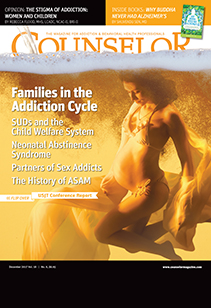Share

HTO was first described in Hear the Music! A New Approach to Mental Health (Hoffman, 1974). This article details that study, which served as the predecessor of the Hoffman Organicity Test (HOT). This article will also help readers understand why the assessment was produced, the tools necessary to conduct the test, and the administration and results of the product. Additionally, readers will learn of the validity and reliability of the study as well as what has come from this body of work.
Description of Subjects
The subjects for HTO consisted of 221 individuals who were matched by age, IQ, and by their ability to cooperate and understand testing procedures instructions. Sixty-three organics, fifty schizophrenics, and 108 nonorganic subjects were chosen. All subjects in the schizophrenic and organic group had at least two diagnoses by a psychiatrist, psychologist, and/or neurologist confirming their disorder. The nonorganic group consisted of selected individuals who had no known neurological or psychiatric disability. Subjects of the organic group had definite diagnoses of organic brain syndrome or chronic brain syndrome. All members of the schizophrenic group had diagnoses of schizophrenia, chronic undifferentiated type or paranoid type, with no indication of organic involvement.
Test Materials
Test materials consisted of a rhythmic apparatus—drum, cymbal, woodblock, cowbell—scoring sheet, a ten-minute cassette recording, and a cassette recorder. The instruments were chosen for their unfamiliarity to the subjects as well as their distinct diversification of sound.
Administering the HTO
Results of the HTO 1975
Table 1 shows the mean scores and standard deviations of the test. The organic group scored “organic” on an average of 25.87, whereas schizophrenics averaged 1.38. The nonorganic group scored an average of 0.9.
Table 2 shows the t values and their level of significance. On the t test comparing the differences in means scores for the schizophrenic and organic groups, the t value was found to be significant at 0.001, schizophrenic and the nonorganic group were inconsequential, and the organic and nonorganic groups were significant at 0.001. As seen in Figure 1, the schizophrenic group showed a significantly closer relationship to that of the nonorganic group with a mean score of 1.38 than did the organic group with a mean score of 25.87. The findings of the HTO evidenced that the most accurate predication were found between 10.6 and fifty-nine years of age.


The subjects for the Hoffman Organicity Test (HOT) research consisted of forty-four individuals who were matched by their age and their ability to cooperate and understand testing procedures and instructions. Subjects were tested on an outpatient basis. Twenty-five nonorganics and nineteen organic individuals were chosen. The nonorganic group consisted of selected individuals who were medically clear of any known neurological or psychiatric disability. Members of the organic group were chosen with a definite diagnosis of organic brain syndrome. These subjects were selected from several private practices in Broward County, Florida.

Table 3 shows the cutting scores and the number of subjects in each group falling within the cut-offs.
In order to assess the stability of the HTO over time (i.e., test-retest reliability) fifty-eight subjects were administered the test on two different occasions. The time interval between the first and second administration averaged two weeks. A Pearson product-moment correlation was used to calculate the respective relationships between scores obtained from the two administrations. The test-retest correlation coefficient was 0.92 for part I and 0.96 for part II of the HTO. With respect to the reliability of the classification of test subjects, fifty seven of the fifty eight subjects (98 percent) were classified the same according to the results of the second administration.

Validation Study
This study compares the HTO results of three groups: twenty-five nonorganics, twenty-eight schizophrenics, and twenty-five organics. Subjects in the schizophrenic and organic groups had at least two diagnoses by a psychiatrist or psychologist. The diagnoses of the organic and nonorganic group was not known by the examiner before administering and scoring the test. The nonorganic group consisted of randomly selected individuals who had no known neurologic or psychotic disabilities. The nonorganic group was screened with the Elizur Test of Psycho-Organicity (Elizur, 1993) to rule out organic involvement. The nonorganic group was screened with a mental status examination to determine the presence of schizophrenia or a psychotic disorder. They denied any history or evidenced any current symptoms of schizophrenia or psychosis. The nonorganic and schizophrenic groups were matched by sex, age, and average intelligence. The organic group was matched by sex and age only. It was not possible to match the organic group by intelligence due to intellectual deficits inherent in the organic population.
The HTO diagnosed twenty-five out of the twenty-five nonorganic subjects correctly, 100 percent correct diagnoses; twenty-six out of twenty-eight schizophrenics as being nonorganics, and twenty-five organics were diagnosed correctly. This validates that 92 percent of the schizophrenics were found to be nonorganic, and 100 percent of the organics were diagnosed correctly.
Methodology
The HTO was a short, inexpensive, easily administered test with a high degree of predictability. Unfortunately, its administration was limited to music therapists. Psychologists, psychiatrists, and other mental health professionals complained that the test was difficult to administer in their practice. The major complaints focused on the noise and the bulky size of the unit.
Another aspect of revising the HTO came from the results of the original study. Part I of the test was found to have no level of significance in determining the presence of an organic brain disorder. Part I was therefore omitted from the test protocol. The practice examples were shortened due to the number of complaints from the normal subjects. Complaints focused on the simplistic repetitions in the practice examples.
The revision of the HTO (currently entitled the HOT) was designed to fit the testing needs of the mental health professional. It is easily administered by not only a music therapist, but all mental health professionals. It is shorter, more adaptable to the professional’s private practice and less expensive. The HOT eliminates the necessity to produce a bulky and noisy testing apparatus.
No individuals were chosen if they were taking medication. This was done to avoid test results being affected due to medication side effects. In order to test the clarity of directions, three organic and three nonorganic individuals were chosen at random. Those chosen were not utilized for the testing procedure. They were given the test-taped instructions to determine if they were clear and succinct. Each subject was tested additionally with the Bender Visual Motor Gestalt Test (BGT; Bender, 1938, 2003) for a comparative study along with the HOT. The BGT was used also as a screening device to rule out organicity for the nonorganic group. The BGT and the HOT were randomly rotated to avoid test contagion. Before the test was administered, each subject was asked to sign a statement of consent to insure that they were informed of the nature of the research and the risks as a subject.
Test Materials
Test materials consisted of a scoring sheet, four separate geometric drawings (cross, circle, square, diamond), a cassette recorder, and a five-minute cassette recording. The geometric drawings were chosen only for their unique differences, attempting to eliminate confusion to the subject. The geometric drawings can be seen in Figure 2.
Administering the HOT

The tester was seated behind the subject to avoid shaping behavior. Therefore, the subject was not able to see the tester scoring the test. The same tester tested all subjects in this study. There was a short introductory practice portion administered by the tester. This was accomplished to determine if the subject had an auditory perceptual difficulty. The practice rhythmic patterns were not related to the actual test rhythmic patterns. If the subject was unable to understand the instructions, the test was terminated and no score was recorded, and the subject’s score was eliminated from the study. If the subject understood the practice instructions, the test was administered.
Statistical Analysis
The Spearman Rank-Order Correlation Coefficient (Spearman’s Correlation) was used to determine a relationship between the HOT and the BGT for the nonorganic and organic groups, and to determine a relationship between the HOT and nonorganic and organic groups. Also, there were to have been fifty subjects in the study, though due to difficulty in procuring sufficient subjects in the organic group, only nineteen in the organic group and twenty-five in the nonorganic group were tested.
Results
The HOT and the BGT were administered to two groups of subjects; an organic group, comprised of patients clinically diagnosed with organic lesions and a nonorganic group with no clinical diagnosis of brain damage. In addition, the HOT was readministered to both groups two to three weeks after the initial testing. The means and standard deviations of each group for each test are presented in Table 5. As Table 5 shows, the means for the control group were very close to zero for the BGT as well as both administrations of the HOT.


The low means reflect floor effects which were obtained on all tests with this group. In contrast, the means and standard deviations for the organic group reflect a wider distribution of scores, which turns out to be comparable for both administrations of the HOT and for the BGT. Statistical analyses were conducted to assess the reliability and empirical validity of the HOT as a measure of organic dysfunction. These analyses are described in the following two sections of this article.

Reliability
Test-retest reliability of the HOT was established by administering the instrument of both the organic and the nonorganic groups and then retesting them after two to three weeks. Because the nature of the distribution of HOT scores is unknown for either population in this study, the distribution-free Spearman’s Correlation between both administrations of the HOT was used as a reliability index. The coefficient of stability collapsed across both groups was extremely high (r = +0.932 [p < .01]).
Because the HOT is designed specifically to organic dysfunction, identical measures of reliability were calculated separately for the nonorganic and organic groups. In doing so, test-retest reliability could be determined for the organic group. The coefficient of stability was exceedingly high for the organic group (r = +0.913 [p <.01]), but not as great for the nonorganic (r = +0.496 [p < .05]).
Validity
The validity of the HOT as a measure of organic dysfunction was established in two ways. First, comparing HOT scores obtained from the two groups to an accepted measure of organic disorder (the Hutt-Briskin scoring system for the BGT) yielded an index of concurrent validity. Second, construct validity was assessed by examining group differences on both the HOT and the BGT.
Concurrent Validity
Construct Validity
The validity of rhythmic memory and associative integration as a construct for indicating organic dysfunction was determined by comparing group differences in performance between the clinically diagnosed organic group and the nonorganic group. Figure 10 visually depicts the mean performance of both the organic group and the non-organics on the HOT and on the BGT. If significant differences exist between the performances of the organic group relative to the performance of nonorganics, then the empirical validity of the HOT test as an index of organicity should be established.
Discussion
The lack of literature in the area of rhythmic memory, associative integration, and its relationship to organic brain disorder, made it difficult to find appropriate resources for review. Throughout the years, many claims, but virtually no research, has led to the premise that there is a connection between the brain impaired individual and dysfunctional rhythmic ability (Nordoff & Robbins, 1965). These observations were mainly seen by music therapists in neurological wards of state mental hospitals. However, virtually no research has come from these claims or observations.
It is unclear whether the data of this study assesses rhythmic dysfunction, rhythmic memory functions or other memory/rhythmic functions, but there seems to be sufficient data to support the conclusion that the HOT can be used as an assessment tool to determine the presence of organic brain disorder. The pairing of rhythmic patterns and common geometric designs, as measured by the HOT, is a valid construct as a measure of organic brain disorder.
The data show that the HOT permits a reliable and valid assessment of the presence of organic brain dysfunction. The significant correlations between the two administrations of the HOT—both within the organic group and collapsed across the two groups examined in the study—suggest that the conditions measured by the HOT are stable across time, at least for the interval between testing in this study. The correlations between the HOT and the BGT affirm that the HOT established concurrent validity. Further, the analysis of group differences between clinically diagnosed organic patients and a nonorganic group provide support that rhythmic memory and associative integration, as measured by the HOT, is a valid construct as a measure of organicity. The findings in this study suggest that the HOT may serve as an easily administered screening tool in the assessment of brain damage.
Localization
About Me
Norman E. Hoffman, PhD, EdD, LMHC, LMFT, was accepted to the clinical internship at Menninger Memorial Hospital after working in the psychiatric department at the Devereux Foundation. He studied at the Thomas A. Edison College, where he was awarded a doctor of philosophy in psychotherapy. In 1994 he completed a doctoral degree in human services counseling from the University of Sarasota, and in 1995 he obtained a doctor of pastoral psychology from Florida Religious University.












 Counselor Magazine is the official publication of the California Association of Addiction Programs and Professionals (CCAPP). Counselor offers online continuing education, article archives, subscription deals, and article submission guidelines. It has been serving the addiction field for more than thirty years.
Counselor Magazine is the official publication of the California Association of Addiction Programs and Professionals (CCAPP). Counselor offers online continuing education, article archives, subscription deals, and article submission guidelines. It has been serving the addiction field for more than thirty years.